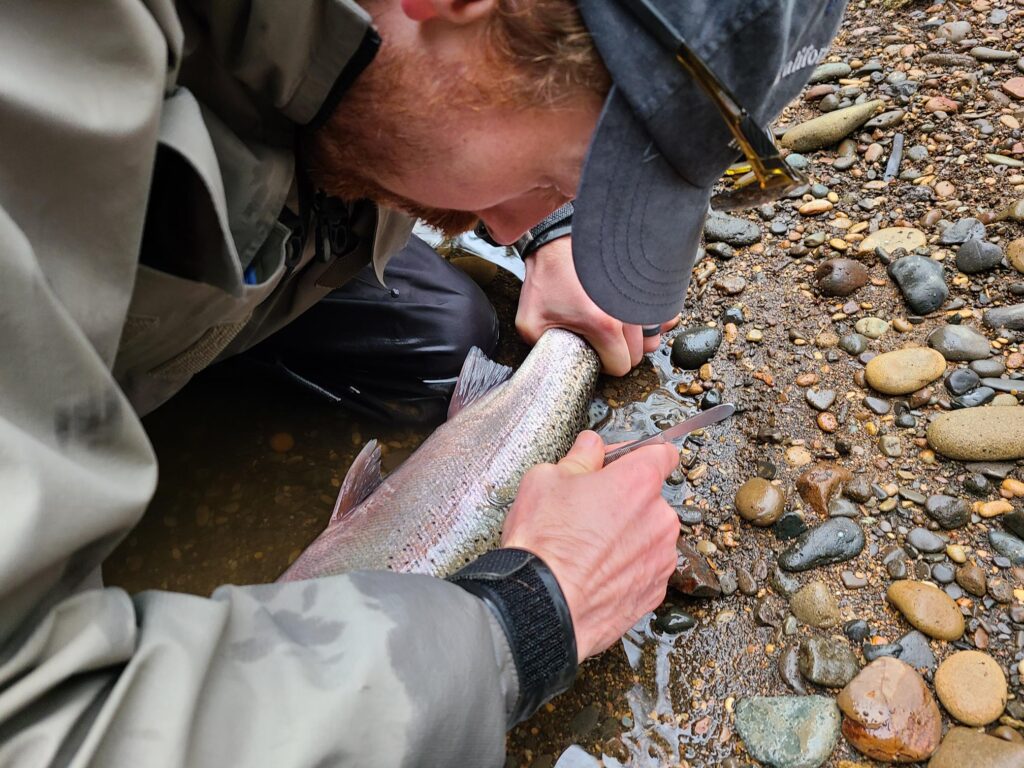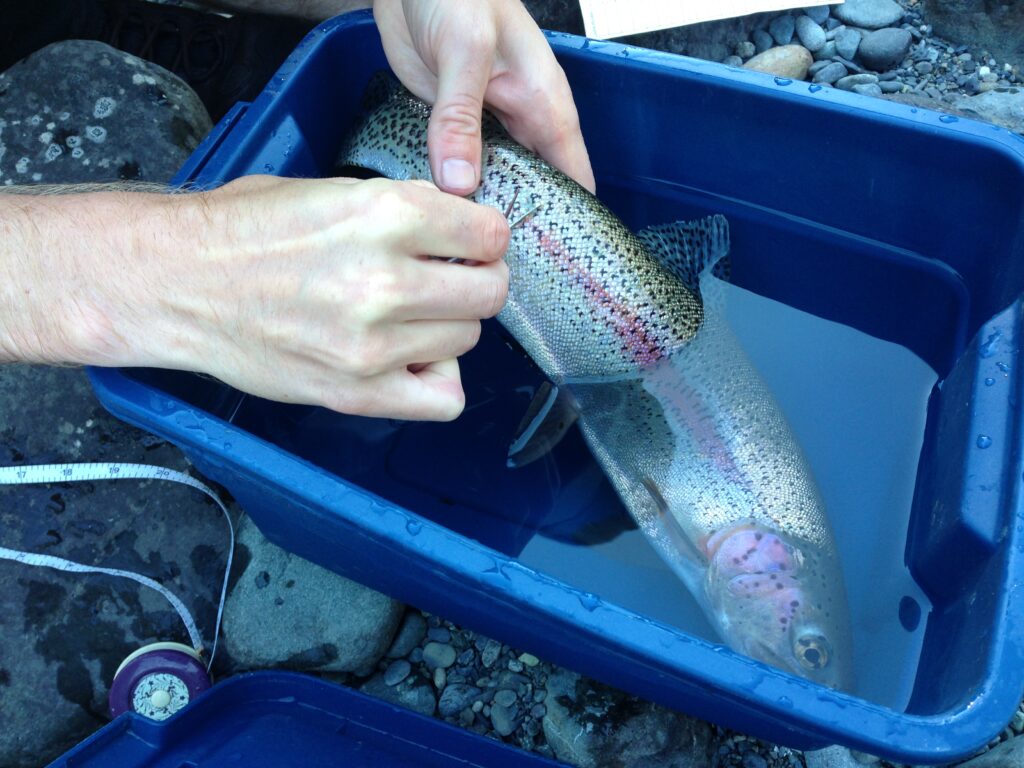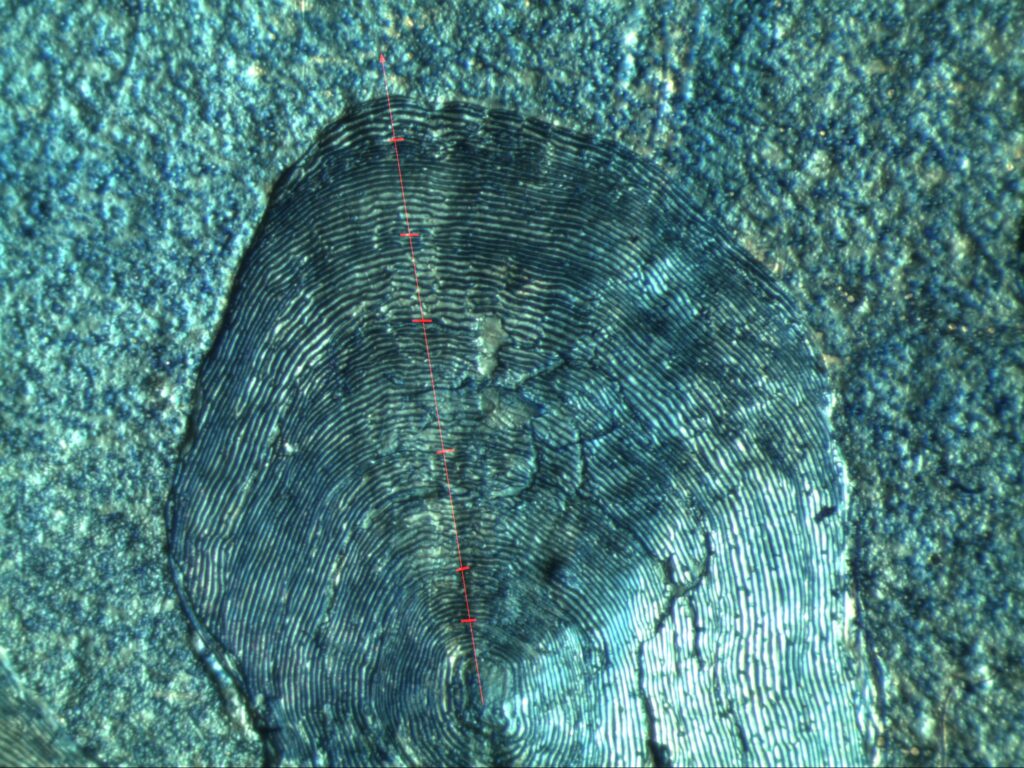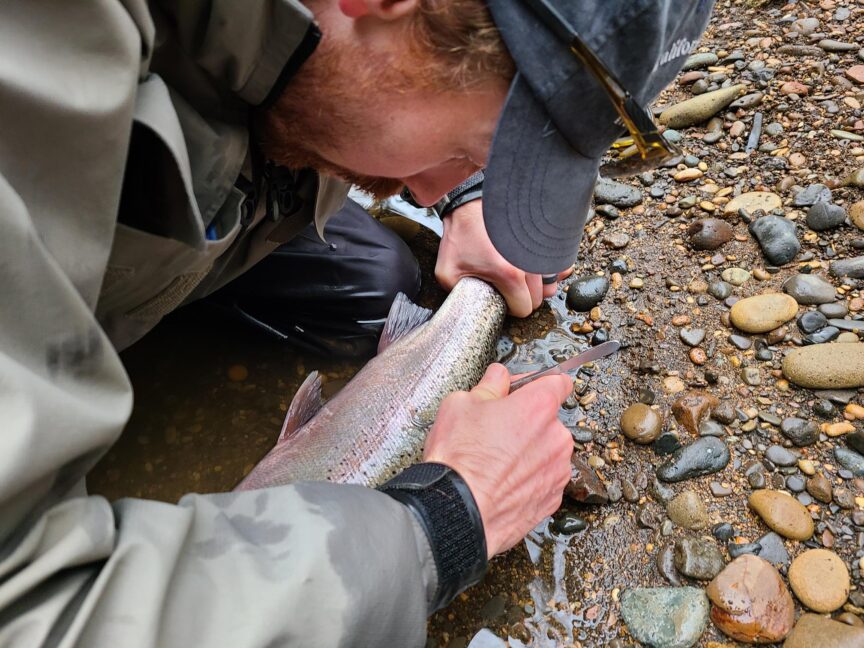
WDFW is seeking anglers to help collect scale samples from wild winter steelhead in Southwest Washington
This winter, the Washington Department of Fish and Wildlife (WDFW) is seeking anglers to assist with collecting scale samples from natural-origin winter steelhead in Southwest Washington’s Region 5. This volunteer-sampling effort, entering it’s third year, aims to assess the age composition of steelhead populations, filling critical data gaps that hinder the understanding of population diversity and dynamics.
Current sampling efforts, which rely on carcass recovery, typically collect on average only 10 samples annually across 12 basins—a number insufficient to accurately represent population age composition. By encouraging angler participation, WDFW hopes to significantly increase sample collection.
How it works
During normal angling under existing permanent-rule seasons, participating anglers are asked to collect scale samples from natural-origin winter steelhead with intact adipose and ventral fins. Sampling will take place between Jan. 1 and March 15, 2025, or until the listed closure dates for specific waterbodies. The goal is to collect 100 samples per basin, though any increase from current collection rates will provide valuable data.
Priority sampling locations
Target basins for winter steelhead scale sampling include:
- Grays River
- Elochoman River
- Skamokawa Creek
- Mill Creek
- Abernathy Creek
- Germany Creek
- South Fork Toutle River
- Green River (North Fork Toutle tributary)
- Coweeman River
- East Fork Lewis River
- Washougal River
Other waterbodies in Southwest Washington are also included, with the exception of the Cowlitz, North Fork Lewis, and Kalama river systems.
Training and angler requirements
A training session will be held on Dec. 19, 2024, from 6-8 p.m., at the Southwest Washington regional office in Ridgefield (5525 South 11th Street, Ridgefield, WA 98642). The meeting will cover project goals and sampling protocols, and participants will receive their sampling gear and supplies.
Participants must supply their own fishing equipment. WDFW will provide all scale sampling materials. Volunteers are responsible for following fishing regulations and local, state, and federal laws, such as respecting private property. WDFW will not be liable for any loss or damage to personal gear.
We had a chance to ask a few questions of Steven Gray, a fish biologist with WDFW, who’s been at the helm of this program for the past three years.
Trout Unlimited: What is the purpose of this program?
Steven Gray, WDFW: This citizen science opportunity focuses on improving our understanding of winter steelhead populations in Southwest Washington by involving the public in critical data collection efforts. Specifically, the program seeks to address gaps in data about the age composition of these fish, which is essential for understanding population diversity, life history patterns, and overall dynamics.
Currently, WDFW relies on recovering steelhead carcasses to gather age-related data, but this method yields an average of only 10 samples annually across 12 basins. Such a low sample size makes it difficult to draw meaningful conclusions about age composition and limits our ability to manage these populations effectively.

By inviting anglers and other community members to participate, WDFW aims to significantly increase the number of samples collected. This collaborative approach not only helps fill critical data gaps, but also fosters a sense of stewardship and shared responsibility for the conservation of this iconic species. Participants will play a direct role in shaping the future of winter steelhead in the region while gaining a deeper connection to their local ecosystems.
TU: What can scale samples tell us about these fish and their life history?
WDFW: Scale samples provide valuable insights into the age diversity of fish populations. By examining scales, we can determine the age of individual fish, which helps us understand the success of past spawning cohorts. This information is critical for assessing how different age groups have contributed, or will contribute, to annual production. It also provides a clearer picture of the population’s overall health and trends over time.
TU: How are scale informing WDFW management and fishery opportunities?
WDFW: Scale samples provide important information on the age diversity within fish populations, which helps inform WDFW management decisions. The diversity of ages within a stock gives managers a clearer picture of the health and resiliency of that population. This data allows for better evaluation of how different age classes may respond to different factors like fishing pressures or environmental changes. Understanding age structure also provides more options when considering the potential direct or indirect impacts of proposed fisheries, enabling managers to make more informed decisions about fishery regulations and sustainability measures.

TU: How is the agency using this scale data?
WDFW: Currently, this scale data is being used to fill the immediate data gap related to the age structure of wild steelhead populations. While we have existing data from hatchery operations, there is limited understanding of how wild, natural-origin steelhead populations—and their sub-populations—perform in comparison. By analyzing scale samples from wild fish, the agency can gain insights into their age structure, which is crucial for assessing the health and sustainability of these wild populations. This information helps us better understand the dynamics of wild steelhead stocks and guides more effective conservation and management strategies.
TU: How can anglers learn about the scales they provide to the agency?
WDFW: WDFW is exploring ways to share the insights gained from scale samples. As we continue to gather and analyze the data, we hope to offer opportunities for anglers to learn more about the fish they help monitor. This could include providing updates on how their scale submissions contribute to our understanding of fish populations and sharing key findings about age structure and population health. We value the participation of anglers in this citizen science effort and aim to keep them informed as the program develops.
TU: How can folks get involved if they miss the training?
WDFW: Anglers who miss the Dec. 19 training session in Ridgefield can still participate in the winter steelhead citizen science project. To get involved, they should contact me directly (steven.gray@dfw.wa.gov or 360-906-6726) to receive their sampling gear and instructions. While the training provides a valuable overview of the project goals and sampling protocols, I can ensure participants are equipped with the necessary information and supplies to contribute effectively.
For more information or to register for the Thursday, December 19 training please contact Steven Gray at steven.gray@dfw.wa.gov or 360-906-6726.


